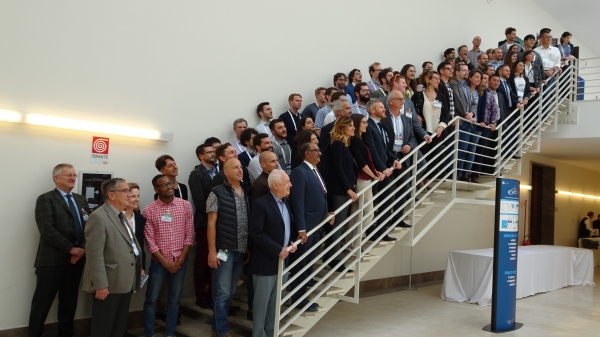Over 110 participants from 25 different countries attended the two training courses organised as a pre-congress event within the scope of the WTC in Naples: "Tunnelling 4.0" and "Communciation and Stakeholder Engagement".
The ITA-CET Committee worked in close collaboration with the ITACET Foundation (who took care of the organisational aspects of both events) and with the Italian Tunnelling Society (SIG ) to develop the programmes of both courses and choose suitable lecturers. These included several well-known figures within the ITA community, such as Jurij Karlovsek (WG 22 animateur), Donald Lamont (WG 5 animateur) Karen Bäppler (WG 14 vice animateur), Han Admirral (ITACUS chairman) and Antonia Cornaro (ITACUS Vice chair).
The aim of the two-day course on "Tunnelling 4.0", held on the 3rd-4th May, was twofold: firstly to take a look at the most recent aspects of digital and information technology applications in the design, construction, maintenance and refurbishment of underground works and secondly to examine the ever-growing use of automation and virtual reality as tools to assist in the monitoring, surveying and supervision of works.
The first day was focussed on Building Information modelling (BIM), kicking off with BIM fundamentals and then going on to look at several case histories of its use in recent projects, such as the Greater Paris Express. The second day looked at how automation is increasingly changing the face of monitoring and surveying, with a presentation of the differnet types of instruments, data collection and information management methods. The use of GPS, Lidar and InSAR to monitor deformations were notably examined. Automation in both conventional and mechanized tunnelling were covered, with examples of new digital technologies and augmented reality for the training of TBM drivers, for example.
The various presentations raised interesting questions put to the lecturers by both the particpants and moderators, such as “Who owns the BIM models – society or the client?” or “ How far away from machine learning are we?”. Other interesting issues regarding health and safety were raised. What happens for example if automation goes wrong and the machine cannot be overrun?
The feedback from this event was highly positive and a request for the organisation of a similar session in another Member Nation has already been received.
The second course on "Communication and Stakeholder Engagement", held on 4th May, was designed to provide information on the latest communication techniques and approaches that can be applied to foster interaction amongst stakeholders, within the scope of a major underground works project. Given the increasing number of underground works all over the world and a growing awareness of the need for efficient communication with the populations and the stakeholders concerned, project owners now accept that engaging in dialogue has become necessary at all stages of a project: ideation, funding, design, construction and operation.
The morning session was chaired by the Vice Chairman of the ITA-CET Committee, Mr Michel Deffayet, and took a look at recent trends in communication , through the use of social networks, blogs and other media. The two ITACUS chairs stressed how communciation can make or break a project and how it is important to demonstrate the value and benefits to society of major underground works if they are to be accepted by the general public and gain social credibility. A journalist's view of how to improve relations between the press and tunnel owners was also presented.
The afternoon session saw some interesting case studies, highlighting how communication aspects were dealt with in some recent major tunnelling projects, such as the ongoing Lyon-Turin rail link.
The ITA-CET Committee would like to thank the ITACET Foundation, the local organizers, the moderators and the numerous lecturers who all helped to make these two courses a success.
